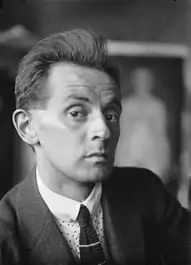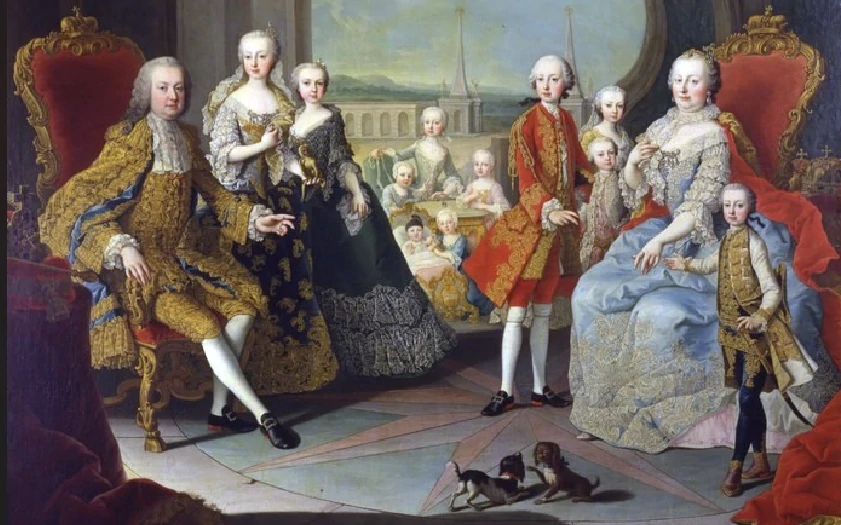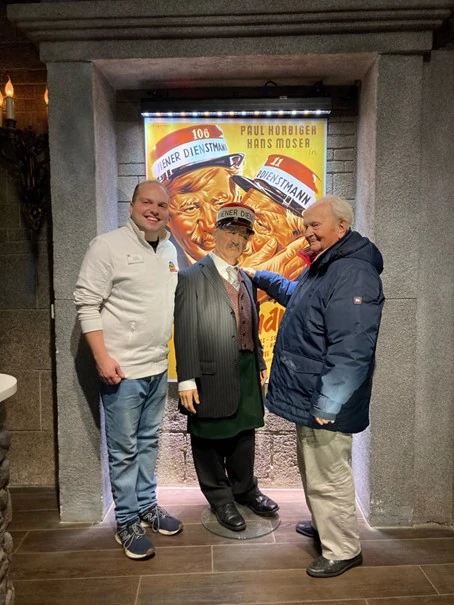What did Gustav Klimt envy about Egon Schiele? Where was Schiele born and what was his connection to Krumlov in the Czech Republic? What themes preoccupied him? When and how did he die? Where is he buried?
Born Egon Leo Adolf Ludwig Schiele on June 12, 1890 in Tulln an der Donau as the son of a stationmaster, he became one of the most important painters of Expressionism. He had three sisters and his mother came from Krumlov in southern Bohemia . As a result, he enjoyed spending time there. He had a close relationship with his youngest sister Gertie , as she modeled for him when he was still a painter. His father died of syphilis when Egon was 15 years old. His godfather and uncle Leopold Czihaczek therefore became his guardian and patron. When he began to draw, it was initially railroads, which is hardly surprising as he grew up at Tulln station. At the age of 16 , he was accepted at the Academy of Fine Arts in Vienna , but the rigid daily routine under Professor Christian Griepenkerl did not suit him, so he left the academy after two years and founded his own New Art group . He was enthusiastic about Gustav Klimt and in 1907 he had his first personal meetings. Klimt became his fatherly friend and mentor . He was also able to convince the art critic Arthur Roessler of his talent. Influenced by Max Oppenheimer, he turned away from Art Nouveau and towards Expressionism . Schiele’s themes were sexuality and death, which he expressed with colors in his paintings. Klimt once said that he would envy him for the way he depicted this expression in people’s eyes in his paintings. He adopted Klimt’s muse – Wally Neuzil. She became Schiele’s model and mistress. He moved to Krumlov with her and they lived there in a wild marriage. The visits of children to Schiele’s studio were also not approved of. The couple therefore moved to Neulengbach, where Schiele was briefly imprisoned for indecent drawings of minors. His bad reputation preceded him, but back in Vienna, Gustav Klimt helped him to make contacts with collectors and gallery owners, such as the industrialist August Lederer. Schiele enjoyed great success. In 1912, he moved into a new studio in Hietzinger Hauptstraße, where he lived until his death in 1918. The First World War meant that Schiele was called up for military service . Before he was transferred to Prague , he married the middle-class Edith Harms, who lived opposite the studio with her sister Adele . He wanted to keep his mistress Wally Neuzil , but both women were against the love triangle . Wally then went to the front as a first aider, where she died of scarlet fever. Schiele returned to Vienna in 1917, where he worked as a clerk and was able to draw on the side. When Gustav Klimt died on February 6, 1918, Egon Schiele drew several portraits of him. Schiele’s career soared in 1918. The 49th exhibition of the Vienna Secession was dedicated to him. He exhibited now famous pictures such as “Edith Schiele seated” or “Crouching human couple (the family)” and other paintings and drawings. His star was rising and he was about to make a name for himself. In the fall of 1918, Egon Schiele, like many others, fell ill with the Spanish flu and died of the pandemic on October 31, 1918 at the age of 28 . His wife Edith, six months pregnant, died three days before him. Both were laid to rest in an honorary grave at the Ober-St-Veiter cemetery . Today, Schiele’s paintings are coveted worldwide and fetch top prices at auctions. To name one example: Sotheby’s auctioned “Houses with Colorful Linen” in 2011 for around 27.6 million euros. His works include many female nudes, self-portraits, but also landscape paintings. The world’s largest Schiele collection can be found in the Leopold Museum, but you can also encounter Schiele in the Belvedere and the Albertina. Time Travel TipA visit to Tulln, the town where Schiele was born, is highly recommended. Tulln can be reached by train from Vienna in 20 minutes, you will find the house where Schiele was born directly at the main train station and a special path in Egon’s footsteps leads you through the town to the Schiele Museum on the Donaulände.
Image source:
https://commons.wikimedia.org/wiki/File:Egon_Schiele_photo.jpg?uselang=de



